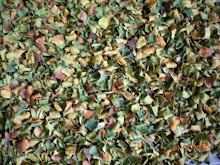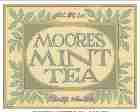
Mild in taste with a cooling effect, white tea helps strengthen gastrointestinal health and is mentally refreshing. It eliminates body ‘dampness’ and lowers body temperature
Early Sung Emperors (AD 960-1279) were connoisseurs of white tea and they fully appreciated its health benefits. In his book entitled, ‘Daguan Theory of Tea’ written in AD 1107-1110, Emperor Huizong of Sung Dynasty, Chao Ji ascribed to white tea its incomparable qualities, including ‘thin leaves in translucence ’, ‘like unpolished jade’, etc.
White tea is a hereditary variation evolved under low temperature environment, resulting in its inherent deficiency in chlorophyll. Hence, it is a unique type of tea plant! Due to the unique metabolism of the tea plant, which suppresses the synthesis of chlorophyll during low temperature period, but significantly increases the production of aminophenol, the aminophenol composition of early Spring white tea is in general more than 6%, with that of higher content even reaching 9%! Other green teas produced in the same season have aminophenol composition ranging from 2-4%. Aminophenol in tea is constituted of more than 20 types of amino acid, of which about 50-60% is tea amino acid. This tea amino acid is a characteristic constituent of tea. To date, other than the minor content found in this particular source, it is not found in other faunas and floras!
Mild in taste with a cooling effect, white tea helps strengthen gastrointestinal health and is mentally refreshing. It eliminates body ‘dampness’ and lowers body temperature. According to the eighth issue of 2003 edition of the journal,’ Tea Information’, the academic journal of USA Academy of Science reported on the discovery of Harvard University Medical College that regular tea drinking increases five-fold the rate of interferon secretion by human blood immunocyte. Interferon is the frontline of human ‘chemical defense’ against infections due basically to the tea amino acid compound in tea leaves, known as ‘theanine’. Theanine decomposes in the human internal organs into ‘ethylamine’, which in turn mobilizes blood immunocyte of the ‘Gamma-Delta T’ cellular type to enhance secretion of interferon, thereby significantly augmenting the defense capability against external harm. Consequently, it is deduced from this research finding that tea drinking would increase five-fold the rate of interferon secretion by human blood immunocyte. It is now known that the composition of theanine in white tea is higher than that in normal teas by one to two times!
Plucked exclusively during early spring at around 5.00 am in the morning when the tea plants are still covered with dew, only tender buds and the first young leaves respectively are hand-picked. Back from the field, the leaves are then removed carefully by hand so that only the buds are selected. The buds are spread evenly on a bamboo sieve-tray, with utmost care to avoid overlapping, and then placed under either low intensity morning sunlight or natural ventilation to wither. This natural withering process normally takes about a few hours until the buds are about 80 to 90 % dehydrated. Inadvertently, the buds undergo very mild fermentation during this short period of withering. Finally, the withered buds are dried under 30-40 degC heat, either on low fire or under sunlight.
Unlike other teas, white tea undergoes the simplest tea making process in the most natural way, thereby resulting in the highest retention of the nutrients and the medically beneficial constituents in the tea buds!















No comments:
Post a Comment